#sister Plautilla Nelli
Explore tagged Tumblr posts
Text

Plautilla Nelli, Last Supper, c. 1560s
Photo credit: Wikimedia Commons, Public Domain
Further Study:

https://heritagebites.org/2021/01/13/ahead-of-her-time-plautilla-nelli-and-her-everlasting-last-supper/#:~:text=Nelli's%20Last%20Supper%20reflects%20aspects,and%20a%20whole%20roasted%20lamb.
#Plautilla Nelli#sister Plautilla Nelli#art by women#art#palianshow#women's art#art herstory#women painters#Last Supper
5 notes
·
View notes
Text

👩🏻🎨 artists profile.
Sister Plautilla Nelli
aka Suor Plautilla
1524 - 1588
Nelli is the first known female Renaissance painter of Florence. She was born to a wealthy Florentine family and joined the Dominican convent of Santa Caterina di Cafaggio when she was 14. Nelli changed her name to Suor Plautilla. This is where she was learned art.
The convent was managed by the Dominican friars of San Marco who were lead at the time by Savonarola who was also a prophet. He encouraged the nuns to learn an art to prevent sloth, this turned the convent into a center of art. Nelli chose painting. She had a sister who chose writing.
The most famous of the sisters, Nelli taught herself how to paint and draw by studying other artists. She learned from artists like Angelo Bronzino, Andrea del Sarto, but her main influence was Fra Bartolomeo. Most of Nelli’s art was large and more expressive than the men she learned from. She signed her work “pray for the paintress”.
Plautilla Nelli was mentioned in Vasari’s book Lives of the Most Exellent Painters, Sculptors, and Architects.

Sourced from Wikipedia
#female artist#female artists#Italian art#Italian history#art history#renaissance art#religious art#women in art#Plautilla Nelli#suor Plautilla#sister Plautilla#catholic art
2 notes
·
View notes
Text
Pope Francis’s August 2023 Prayer Intention: For World Youth Day
Lord Jesus, to Your most Merciful Heart we entrust all young people that, despite their falls, long to follow You. The world needs Your strength, Your enthusiasm, and Your passion. We pray that, embracing the new life which was given to them at baptism, they may be prophets of new times, able to wake up full of hope and go out on the roads of Damascus to bear witness to the works that You have begun to realize in them. Amen.
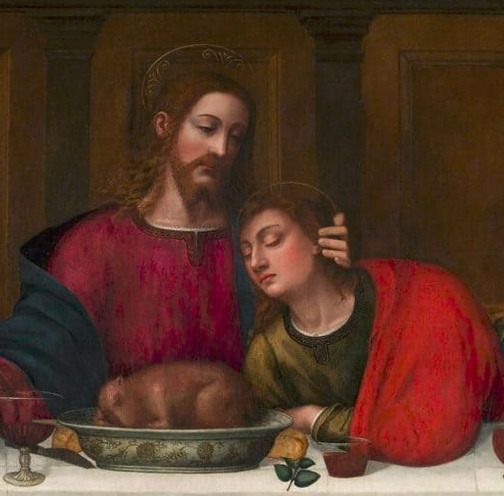
detail of The Last Supper, by Sister Plautilla Nelli, oil on canvas, circa 1568
#Christianity#Catholicism#Jesus Christ#grace#Imitatio Dei#prayers#My Pope#John the Apostle#Plautilla Nelli#Sacred Heart#Light of the World
22 notes
·
View notes
Text

Saint Catherine with Lily Sister Plautilla Nelli (1524-1588)
2 notes
·
View notes
Text

Sister Plautilla Nelli (1524-1588) was an Italian nun who taught herself to paint. She created works for her own convent and others, and was routinely commissioned by wealthy families. She taught a number of her fellow nuns to paint, and together they were more able to take on more elaborate projects. In Giorgio Vasari's 1550 work The Lives of Artists, he wrote:
"...there were so many of her paintings in the houses of gentlemen in Florence, it would be tedious to mention them all."
Of her numerous pieces, we have 17 confirmed surviving works. The most elaborate, her large-scale take on the Last Supper (pictured above), is now on display in the Santa Maria Novella's museum.
Nelli's rendition of the Last Supper features Jesus and his apostles eating the same local foods that she and the other nuns routinely ate, a detail that surely heartened the devoted that would eat below the piece for centuries. The attention to detail and heightened sentiment present in the piece were two hallmarks of her style. The inscription below her signature reads:
“Orate pro pictora,” or “pray for the paintress.”
Did she plan to add it? Did it come to her as she signed? Such a striking statement, both a plaintive request and declaration of identity, carried through the centuries.
As a woman, Nelli lacked access to the training and materials that would have allowed her to do mural or fresco work, so she composed her 23 by 6.5 foot piece on canvas. Ultimately, the painting's canvas base ended up saving it.
Napoleon's 1808 invasion of Italy, and the subsequent suppression of organized religion, would have seen it destroyed had it been a stationary fresco. Its portable nature allowed it to be moved to the nearby Santa Maria Novella, which remained active during the Napoleonic period. There it remained in obscurity until the 1990s, when Jonathan Nelson rediscovered it during the course of research for his book on Nelli.
Santa Maria Novella reopened their refectory as a museum in 1983 - though the painting was not put on display there. It was kept in the smaller dining hall frequented by the order's friars, and they considered it part of their day-to-day lives, just as the order at Santa Caterina did for centuries pre-Napoleon.
The painting's rediscovery led to a restoration effort and plan for display. In 2017, the Advancing Women Artists Foundation began a crowdfunding campaign to pay for the restoration of the piece. It was relocated from the in-use dining hall to the museum, and unveiled to the public in October 2019.
Sources:
Article - Atlas Obscura Article - My Modern Met Info - Advancing Women Artists PDF - Giorgio's The Lives of the Artists Goodreads - Nelson's book on Nelli
0 notes
Note
I agree with everything in your post - though if I might offer an addendum - another critical thing I think GRRM's portrait of medieval society is missing? The significant religious and secular power some women (primarily of the nobility) amassed after adopting the religious life. This could vary significantly depending on the country and time period in medieval Europe and there were limits to her religious powers (So to speak)- she could not administer communion, could only hear confession in very limited circumstances, etc. On the other hand, many abbesses in the medieval period (to a slightly lesser extent during the renaissance) were great landowners, acting as landlords, revenue collectors, magistrates, and managers for the lands under their convent's control. For women of the nobility, convents could be places of great learning where these women would have the opportunity to learn Latin and Greek, read (and discuss) the scriptures, and had access to many other books of religious and philosophical nature during this period of history books were scarce - and monasteries and convents often were the main institutions storing and reproducing these texts). Out of the convents of Europe emerged illuminators, composers of sacred monophony and polyphony, the founder of scientific natural history in Germany, painters and muralists (I'm looking at you Plautilla Nelli!), the letters of Abelard and Heloise (the influence of which on European epistolary development might be incalculable), the first European encyclopedia written by a woman (the Hortus deliciarum), and so much more!
Many of Medieval Europe's' female writers were nuns or otherwise in the religious life (anchorites like Julian of Norwich or a secular canoness like Hrotsvitha of Gandersheim). I have a lot of problems with Catholicism, I'll be the first to admit it, but religious spaces like the convents gave some very brilliant and erudite women the chance to read, think, and share their thoughts with the world (I will note that there were also some great secular female writers in this period - I'm just focusing on the religious life right now). Elisabeth of Schönau, Heloise d'Argenteuil, Herrad of Landsberg, Hildegard of Bingen, Mechtild von Madeburg, and Marguerite Porete are only some of the women I could name.
While I understand that GRRM's Septa's play a different role in Westerosi society (in a number of respects) to nuns and abbesses of the Catholic Church, it was quite a surprise to me, that in a society where worship of the Seven is such a dominating force with significant religious and temporal power, that there were no politically/socially powerful Motherhouses, or any indication of any kind of hierarchy amongst Septas themselves. The fact that GRRM doesn't write about Septas (barring the Silent Sisters) doing much of anything outside of serving as governesses to daughters of the nobility is absolutely bizarre to me, honestly.
Hello, I’ve a part asoiaf part medieval history question. So despite the strict gender roles, we know that women (at least noble women) can enjoy some “male” activities like horse riding and some kinds of hunting (Cat says Arya can have a hunting hawk). Are there any other “male” activities women can partake too without being judged about it, or even encouraged to do so (both in Westeros and real world)?
So as medievalists and historians of gender have pointed out, ASOIAF is far more restrictive for women than actual medieval Europe. I'm actually going to leave aside the situation of noblewoman for a second, because the vast majority of women were not nobles and their experience of gender would be radically different.

What counted as "male activities" for example would vary enormously by location (rural vs. urban) and thus occupation (farmer vs. artisan). Among the peasantry, while men tended to work in the fields and concentrated on cereal-crop production and women tended to do the manifold work of maintaining the home, the reality is that the irregular nature of agricultural labor meant that in times of high demand (especially spring sowing and autumn harvest) it was a matter of survival for every single member of the household to work in the fields. So women absolutely knew how to work a plow, and swing a scythe.
As for the urban worker, while there was also a high degree of gender segregation by occupation and guilds could often be quite misogynistic when it came to trying to masculinize trades (especially those involving higher rates of capital investment), it was also true that the entire household was expected to contribute their labor, so that wives, daughters, collateral female relatives, and female servants picked up the trade alongside their male counterpart. Moreover, as biased towards men as guilds could be, they were even more committed to the principle that guild businesses were family businesses, and so in situations where a master artisan had only daughters or died childless or died with underage heirs, it was absolutely routine for guilds to admit daughters and widows as guild members, indeed usually at the rank of master, all so that the business could remain in the same family. This is why medievalists can point to so many examples of women who worked in skilled trades, often at a high level.
That's what I think GRRM's portrait of medieval society is missing: an entire world of women in business, working elbow-to-elbow with men to make a living.
As for noblewomen, part of the difficulty is that a big part of being a noble was not doing stuff - not working for a living, chiefly - and instead engaging in leisure activities as much as possible. And women were very much a part of those activities (indeed, for many of them the point was to mingle with eligible people of the opposite gender), whether that's feasting, dancing, hunting, hawking, theater and other entertainments, fireworks, tourneys and jousts, etc.
However, women were also engaged in the main "occupations" of the nobility - estate management and politics - way more than GRRM really takes note of. To begin with, as even GRRM acknowledges to some extent, the lady of the house was expected to take an active role in running the house, which meant managing servants, keeping track of accounts payable and receivable, making sure the supplies arrive on time and in the right quality and quantity, keeping an eye on maintenance and repairs (with the help of servants, natch), etc.
Given that even the manor houses of the nobility were units of economic production, the lady of the house would also be responsible for oversight of how the house was doing with its pigs, goats, chickens and pigeons and geese, bees (because beeswax and honey were really important commodities), sheep, and so on, and what kind of figures they were pulling down at the mill and the weir, and so forth.
As medievalists have known for a long time, this list of duties got even longer whenever the lord of the house was away at war or on business, when the lady would be expected to pick up all his work too - which means making sure the rents and taxes get paid, deciding which fields to distribute manpower to and when, dealing with legal disputes in the manorial court, and so on. And if the war came home, the lady of the house was expected to lead the defense of the castle and there are many, many examples of noblewomen who had to organize sieges that lasted months and even years.
However, we also have to consider the impact of inheritance by birth and the inherent randomness of sex at birth - as much as they tried to avoid it, plenty of noble houses ended up with female heirs or in the hands of widows. Most of the time in most countries, women could and did inherit (or at the very least their male children and relatives could inherit through them) titles and fiefdoms, and while their husbands would often take on overlordship de jure uxoris, unmarried women and widows very much exercised their authority as the Lady or Baroness or Countess or whatever, and history is also full of women who were extremely influential in medieval politics and backed up their influence by any means necessary.
#westerosi feudalism#history of gender#history#medieval history#feudalism#westerosi gender roles#asoiaf
243 notes
·
View notes
Photo


https://www.theguardian.com/artanddesign/2012/mar/30/prunella-clough-artist-industrial-life
10 notes
·
View notes
Text
#FineArtFriday: The Last Supper by Sister Plautilla Nelli (1524–1588)
#FineArtFriday: The Last Supper by Sister Plautilla Nelli (1524–1588)

The Last Supper by Sister Plautilla Nelli (1524–1588)
Date: 16th century
Medium: oil
Collection: Basilica of Santa Maria Novella
What I love about this painting:
The Last Supper, a 7×2-meter oil-on-canvas, preserved in the Basilica of Santa Maria Novella, is the only signed work by Plautilla Nelli known to survive. Her signature, in the upper left corner, reads S. Plavtil – La Ora Te Pro Pictora
View On WordPress
#female artists#Female Renaissance Painters#Fine Art Friday#Sister Plautilla Nelli#The Last Supper#Women in Art History
0 notes
Photo




Sister Plautilla Nelli (1524–1588) was a self-taught nun-artist and the first known female Renaissance painter of Florence. She was a nun of the Dominican convent of St. Catherine of Siena located in Piazza San Marco, Florence, and was heavily influenced by the teachings of Savonarola and by the artwork of Fra Bartolomeo.
Life
Pulisena Margherita Nelli was born into a wealthy family in the San Felice area of Florence. Her father, Piero di Luca Nelli, was a successful fabric merchant and her ancestors originated from the Tuscan valley area of Mugello , as did the Medici dynasty . There is a modern-day street in Florence, Via del Canto de' Nelli, in the San Lorenzo district, named for her family, and the New Sacristy of the Church of San Lorenzo is the original site of her family homes.
She became a nun at the age of fourteen, taking on the name Suor Plautilla, at the convent of Santa Caterina di Cafaggio; she would later be prioress on three occasions. The facility was managed by the Dominican friars of San Marco, led by Savonarola. About half of all educated girls in that era were placed into convents to avoid the cost of raising a dowry. Savonarola's preachings promoted devotional painting and drawing by religious women to avoid sloth, thus the convent became a center for nun-artists. Her sister, also a nun, Costanza, (Suor Petronilla) wrote a life of Savonarola.
Nelli had the favor of many patrons (including women), executing large pieces and miniatures. Sixteenth-century art historian Giorgio Vasari wrote, "and in the houses of gentlemen throughout Florence, there are so many pictures, that it would be tedious to attempt to speak of them all." Fra' Serafino Razzi, a sixteenth-century Dominican Friar, historian and Savonaroliano (disciple of Savonarola), named three nuns of Santa Caterina as disciples of Plautilla, Suor Prudenza Cambi, Suor Agata Trabalesi, Suor Maria Ruggieri, and three others as additional producers: Suor Veronica, Suor Dionisia Niccolini, and his sister Suor Maria Angelica Razzi.
Art and style
Though she was self-taught, she copied works of the mannerist painter Agnolo Bronzino and high Renaissance painter Andrea del Sarto . Her primary source of inspiration came from copying works of Fra Bartolomeo , which mirrored the classicism -style enforced by Savonarola's artistic theories. Fra Bartolomeo left his drawings to his pupil, Fra Paolino who, in turn left them in the possession of "a nun who paints" in the convent of Santa Caterina da Siena. Nelli signed her paintings as "Pray for the Paintress" after her name, confirming her role in spite of her gender. Her work is distinguished from that of her influencers by the heightened sentiment she added to each of her characters' expressions. Author Jane Fortune referred to her Lamentation with Saints and the "raw emotional grief surrounding Christ's death as depicted through the red eyes and visible tears of its female figures" as a case in point. Nelli's Lamentation, which is now in the Museum of San Marco, Florence, has also spurred the writings of The Painter-Prioress of Renaissance Florence, written by Jonathan K. Nelson. Most of Nelli's works are large-scale, which was most uncommon for a woman to paint, in her era.
She is one of the few female artists mentioned in Vasari's Lives of the Most Excellent Painters, Sculptors, and Architects. Her work is characterized by religious themes, with vivid portrayals of emotion on her characters' faces. Nelli lacked any formal training and her male figures are said to have “feminine characteristics”, as her religious vocation prohibited study of the nude male.
Works created, rediscovered, and restored
DocumentaryThe Restoration of Lamentation with Saints: Plautilla Nelli is a thirty-six-minute documentary on the life of Nelli and on the process of restoring of one of her most significant large-scale paintings. The documentary, produced in 2007 by Art Media Studio, Florence, was developed and funded by The Advancing Women Artists Foundation's founder Jane Fortune and The Florence Committee of the National Museum of Women in the Arts.The documentary explores the preparatory drawings beneath the painting's pictorial surface using the process of reflectography. It shows various steps of the restoration project safeguarding the painting against woodworms, found in the painting's wood panel and exterminated, and centuries of encrusted dust and dirt. The documentary's main protagonists include museum executives and art conservation experts such as the San Marco Museum director Dr. Magnolia Scudieri and Florentine restorer Rossella Lari. The restored painting was completed in October 2006, and unveiled at Florence's San Marco Museum where it is exhibited in the large refectory. In her closing comment, Scudieri states, "Not only can we more clearly see the painting's expressive intensity thanks to this restoration, we can also more fully understand the convent life of Plautilla Nelli and her time in Florence.
PBS television documentaryThe Emmy-winning PBS television documentary (June, 2013) Invisible Women, Forgotten Artists of Florence, based on Dr. Jane Fortune's book by the same title, features a segment on Suor Plautilla Nelli and the restoration of the Lamentation with Saints. The television special, which spotlights the thousands of works by women in storage in Florence's museums, hails the little-known nun-painter as "the first woman artist of Florence."
https://en.wikipedia.org/wiki/Plautilla_Nelli
3 notes
·
View notes
Text


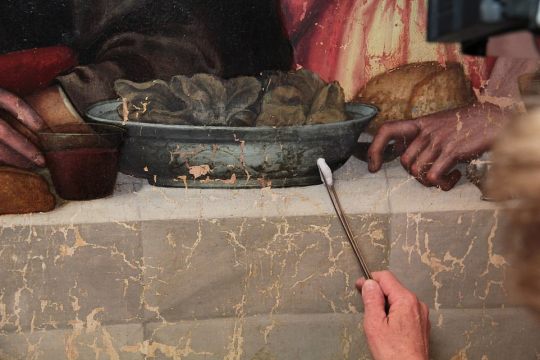
Forgotten 'Last Supper' painted by one of the first female renaissance masters is back to its former glory after 450 years thanks to painstaking four-year restoration
The painting had been hidden for decades in the refectory (dining room) of an Italian convent crumbling away
Plautilla Nelli, 1524 to 1588, was a Dominican nun and painter living in Cafaggio, Italy, and hidden in obscurity
She set up a group of nuns who could be commissioned to paint biblical scenes for churches or private clients
By Milly Vincent For Mailonline
Published: October 2019
The only the 'Last Supper' painted by a self-taught nun during the Italian Renaissance has been revealed to the public after a four year restoration.
Seven meters wide and two meters high the 450-year-old painting had been hidden for decades in the refectory (dining room) of an Italian convent enduring floods and three decades rolled up in storage.
Plautilla Nelli, (1524 to 1588) was a Dominican nun and painter who resided in the covent of Santa Caterina in Cafaggio, Italy.
The Last Supper by Plautilla Nelli, restoration - before (bottom) and finally visible (top), in the 'old Refectory' of the Museo di Santa Maria Novella in Florence
Until now her work had faded into obscurity but centuries after her death her largest surviving work will now be on display in the Museo di Santa Maria Novella in Florence.
The work was restored by the US-registered Advancing Women Artists (AWA) Foundation, which has restored 65 works by historic female artists in Florence since 2009.
Since the foundation first began to conserving sister Nelli's works around 20 pieces have now been attributed to the artist - rising from just three.
Plautilla Nelli was credited in Giorgio Vasari's 16th-century biography, Lives of the Artists, as 'a nun and now Prioress… beginning little by little to draw and to imitate in colours pictures and paintings by excellent masters'.
The Last Supper by Plautilla Nelli, restoration detail. The work was restored by the US-registered Advancing Women Artists (AWA) Foundation, which has restored 65 works by historic female artists in Florence since 2009
The Last Supper by Plautilla Nelli, restoration conservator Rossella Lari with painting 'in progress'
The Last Supper by Plautilla Nelli, restoration detail. The work was restored by the US-registered Advancing Women Artists (AWA) Foundation, which has restored 65 works by historic female artists in Florence since 2009
$187,000 was raised for the restoration of the painting- with donors 'adopting' an apostle for $10,000 each
After entering the covent of Santa Caterina in Cafaggio age 14 sister Nelli started her own company of painting nuns who could be commissioned by the church and private clients to create large biblical scenes on canvas.
It is believed she painted 'The Last Supper' in the 1560s in her late 30s.
A crowdfunding mission by AWA in 2017 £144,500 ($187,000) was raised for the restoration of the painting- with donors 'adopting' an apostle for £7,700 ($10,000) each.
Although disloyal apostle Judas was not willingly 'adopted' by a singular donor, a charitable 10 donors came together to raise the remaining £7,700 ($10,000).
Conservator Rossella Lari makes the finishing touches on The Last Supper by Plautilla Nelli
The restored Last Supper by Plautilla Nelli is put on public display in the Museo di Santa Maria Novella in Florence, Italy
The Last Supper by Plautilla Nelli, restoration after transfer to the Santa Maria Novella Museum, post-restoration
AWA's director, Linda Falcone told The Art Newspaper: 'Within these seven metres you can see different painterly hands, so it's canvas proof that she founded this all-women workshop inside her convent.'
'Orate pro pictora', pray for the paintress, is touchingly written beneath sister Nelli's signature.
Conservator Rossella Lari wrote in a catalogue for the exhibit that the piece had a 'great sense of energy and determination' and noted inconsistencies that she put down to sister Nelli's lack of formal art education.
It is unlikely sister Nelli would have been allowed to study live models as a woman and a nun - she is thought to have used manuals and other paintings to have learned the anatomy of the male apostles that she painted in detail.
A detail of the table of the The Last Supper by Plautilla Nelli, during cleaning before restoration
One of Nelli's most successful Saints in The Last Supper by Plautilla Nelli after restoration (left). Detail of the Saint's arm, most likely drawn from other paintings (right)
'Orate pro pictora', pray for the paintress, is touchingly written beneath sister Nelli's signature
https://www.dailymail.co.uk/sciencetech/article-7599783/Forgotten-Supper-painted-female-renaissance-master-former-glory-450-years.html
5 notes
·
View notes
Photo



The Last Supper, by Sister Plautilla Nelli (1524-1588). Oil on canvas.
194 notes
·
View notes
Text

Seated Madonna Nursing the Christ Child (undated), Sister Plautilla Nelli. Gallerie degli Uffizi, Florence
3 notes
·
View notes
Photo

The Last Supper (1560s), by Sister Plautilla Nelli. This is the earliest known painting of the Last Supper by a female artist.
Plautilla Nelli entered the Dominican convent of Santa Caterina da Siena at the age of 14, following her older sister. This convent was well-known for its creative output, and the nuns painted and sold manuscripts and devotional paintings, as well as embroidering textiles. Nelli may have been taught to paint by another nun, or she may have taught herself.
The Last Supper was her largest and most ambitious work, at about seven metres wide and nearly two metres tall. She would have needed scaffolding and assistants to complete the work, and the nuns would have paid for this themselves.
Nelli depicted Jesus and the apostles as eating the same food that the nuns at her convent ate: a whole roasted lamb, bread and wine, lettuce heads and fresh fava beans. This was to make the scene relatable to the dining hall in which it was displayed.

Nelli’s signature, and her appeal: “Pray for the paintress.”
#history#art#art history#christianity#renaissance art#italian art#dominican order#italy#firenze#plautilla nelli
513 notes
·
View notes
Text
7 Successful Female Artists of the 16th Century
It is known that much of the art world was male-dominated in the past, especially so during the Renaissance in Western society. Women were forbidden to be taught any formal art training, primarily as it was considered immodest for them to study the nude form - a fundamental basis in artistic learning. Regardless of this, women throughout history found ways to gain recognition for their paintings. Here I have compiled a short list of women that worked as artists during the 1500′s. These women were often privately taught, or even self-taught, and gained recognition during their careers.
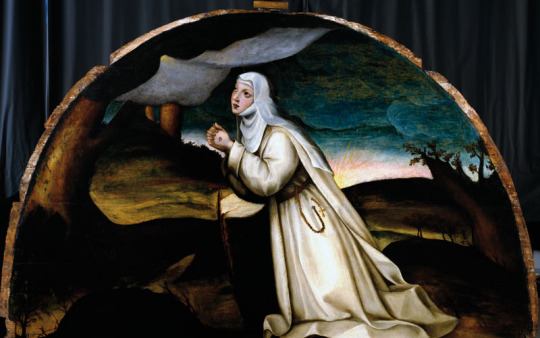
St. Catherine's Vision of Christ, by Plautilla Nelli (1524-1588)
Plautilla Nelli
Plautilla Nelli was an impressive woman and a fitting one to begin the list with. Born into a wealthy family, she became a nun in her teenage years, and was a self-taught painter. She collaborated with many well-known artists of her day, and ran a studio within her convent.
Because of Nelli’s obvious religious connections, her paintings depict devout scenes of the bible. She used her devotion to painting religious settings as a way to promote to other devout women against committing the capital sin of sloth. As seen above, she frequently represented Saint Catherine in her works - the patron of her convent.
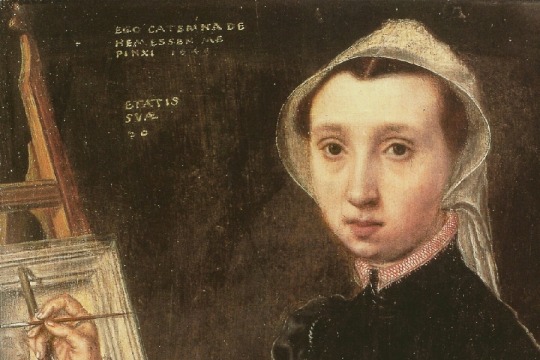
Self Portrait, by Catharina van Hemessen (1528-c. 1565)
Catharina van Hemessen
Catharina van Hemessen was trained by her father, Jan Sanders van Hemessen (c. 1500-c. 1566), a successful Flemish artist. For many female artists during the Renaissance, they too had existing ties to the arts through their fathers or close family members.
Catharina van Hemessen is mostly identified for her portraiture, and is considered to be the first artist to have created a self-portrait with the artist seated at an easel. It is this work by her that is her most known. She was very accomplished in her career, gaining important wealthy patrons such as Mary of Hungary (1505-1558).

The Chess Game, by Sofonisba Anguissola (c. 1535-1625)
Sofonisba Anguissola
Born into a large noble family, Anguissola received a very well-rounded education, to be the most important was arguably in the fine arts. She was even included into an apprenticeship, almost unheard of for women at that time. There was also a friendship that sparked between her and Michelangelo (1475-1564) while in Rome. Michelangelo was not blind to her talent and would often send her his own drawings, with her sending him critique in return.
Anguissola became so popular that she was eventually employed by royalty, earning the title of lady-in-waiting as she tutored Queen Consort Elisabeth of Valois (1545-1568) in the ways of art, and became the official court painter to the Spanish King, Philip II of Spain (1527-1598).
Travelling to many places in her lifetime, Anguissola’s style of painting often changed with her environment - such as becoming more formal whilst in the care of royalty. At the old age of 93, Sofonisba Anguissola passed away a wealthy and famous artist.
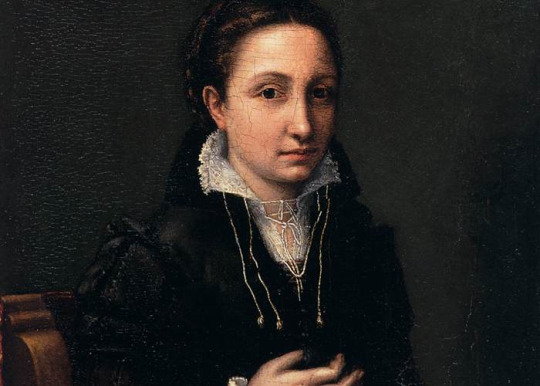
Self-Portrait, by Lucia Anguissola (c. 1536-c. 1565)
Lucia Anguissola
Lucia Anguissola was one of the younger sisters to the aforementioned Sofonisba. It was her artistic older sister that taught her in the ways of fine art, and their styles were similar. Although she was mentioned to have been considered the most talented of the two, she never had the opportunity to experience the same level of recognition as her sister, as she died young.
Unfortunately there is little information in reference to Lucia Anguissola, all we can really do is admire the talent and hard work put into her known created work.
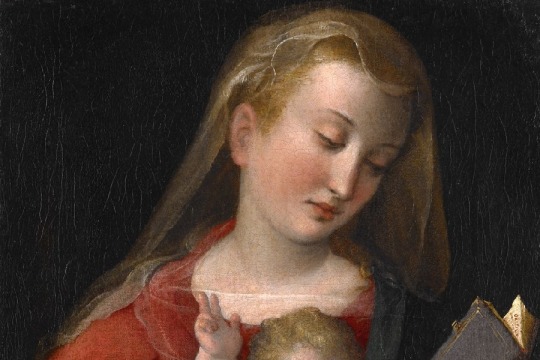
Madonna and Child, by Barbara Longhi (1552-1638)
Barbara Longhi
Similar to that of Catharina van Hemessen, Barbara Longhi was also introduced to art through her father. She collaborated with her father, Luca Longhi (1507-1580), a Mannerist painter, as well as her older brother.
Barbara Longhi was recognized for her talent and received frequent commissions. Many of her works, however, are lost or unknown today. Due to the influence from her father, many of artworks attributed to him could in fact belong to Barbara.
Primarily known for her talent in portraiture, Longhi did also paint religious works during her lifetime. These often focused on the subjects of those involved, emphasizing their importance by nullifying the backgrounds.

Portrait of a Lady with a Lap Dog, by Lavinia Fontana (1552-1614)
Lavinia Fontana
Lavinia Fontana was a woman that flipped gender expectations in a time when deviating from the traditional was unheard of. She was born to a family with a painter, her father Prospero Fontana (1512-1597). Lavinia Fontana’s talent was recognized early on. She became sought-after for the portraits she created of nobles, yet developed her skills in other areas of painting - even to being commissioned by the Vatican due to her religious works.
She later married, and had many children, yet this did not prevent her from obtaining a fruitful career. Her husband was supportive of her work, and they created a strong partnership where Fontana took the role as breadwinner.
It is surprising that Fontana was so well accepted by the Church due to the controversy surrounding her. She often painted the nude female form, suggesting that she used live models to do so. This would have caused a scandal and blackened her reputation. This repeatedly caused problems for female artists.

Judith with the Head of Holophernes, by Fede Galizia (c. 1578-c. 1630)
Fede Galizia
Fede Galizia was born into an artistic family, her father, Nunzio Galizia, was a miniaturist. More than likely thanks to training from her father, Fede Galizia had an exceptional eye for detail and became an accomplished artist early in her life. She was already well within the business of commissions by the age of eighteen.
While she was an adept artist in portraiture and had created alter pieces, it is her still life works which hold most of the attention. The make up the majority of her surviving artworks. She has been regarded as a pioneer of this genre, which was becoming incredibly popular in Italy during this time.
#art#art history#information#female artists#Judith with the Head of Holophernes#Fede Galizia#St. Catherine's Vision of Christ#Plautilla Nelli#A Short List of Female Artists in the 16th Century#list#Self Portrait#portrait#Catharina van Hemessen#art history blog#women artists#female artist#women artist#women in art#The Chess Game#Sofonisba Anguissola#Lucia Anguissola#Madonna and Child#Portrait of a Lady with a Lap Dog#Barbara Longhi#Lavinia Fontana#italian art#italy#italian#the renaissance#renaissance
3K notes
·
View notes
Text
Arte - 2020 spring anime season taste testing
So, let’s start with this one. I had read some of the manga for this but it was quite a while ago so all I remembered was that I hadn’t found it particularly engaging and ended up kind of not continuing. But hey, maybe I’ll have better luck with the anime, I thought.
Weeellllllll.

See, this is not a bad show. It’s what I tend to call unoffensive - it has its heart in the right place, the characters are fine, the story is okay, it’s just kind of a very typical Anime/Manga Type Story with very typical Anime/Manga Type Characters. So no, nothing wrong with the show, I think I’ll keep watching for a while. Thing is, though. I kind of remember now why I hadn’t found the manga engaging, and there are so many reasons, and they’re even more apparent in the anime.
To get this out of the way first, I just don’t really care about the main character and her dynamics with her master. Again, technically nothing wrong with her or the relationship (except the fact that it’s so obviously gearing up for a romance between the two, an aspect I find terribly boring and trite), but since it’s the main character and the main relationship, it does kind of put a damper on my enjoyment of the story.
More than that, though, I find the whole “OMG SHE’S GETTING DISCRIMINATED AGAINST BECAUSE SHE’S A GIRL BUT SHE’S TOUGH AND SHE’S GONNA SHOW HER WORTH TO ALL THE BAD DUDES” aspect kind of annoying, not because it’s a bad message, but because of how it’s being handled without consideration of the historical context. It’s so obvious that the author is approaching the issue from a very modern and narrow POV. A lot of Arte’s struggles come down to class and the way she had been raised, instead of her gender, and it’s so annoying to see the show ignore that for a very simplistic and in some ways misguided explanation.

For one - back then, just as today, it was absolutely not uncommon for women to do physical work. Maybe not moving stones and building houses, but women did do a lot of physically taxing things, even stuff that - gasp, shock, horror - left their hands wounded, chapped, etc. Hell, unless you were wealthy (or a sex worker, I guess) you weren’t expected to have baby smooth skin and a sedentary lifestyle. Now, sure, rich women didn’t do physical work, but that’s because they could afford having other people doing it for them, not because they were women. Back then, just as today, the lower you go on the social ladder the more physical work you see women doing. Basically, the author just kind of forgot that hey, working class women existed, which, y’know, really grinds my gears.
Two - people being all “omg a woman can’t make a living on her own!” when in actuality this, too, wasn’t particularly uncommon. Sure, not in case of young women, who were expected to get married and have children, but there were a whole lot of women who lost their husbands or didn’t marry for whatever reason, and had to fend for themselves. And you know, they did just that. Obviously it was a lot more preferrable for a woman to be married, both for social and financial reasons, but it’s not like a woman making it on her own was something extraordinary. (And on that note, oh my god I rolled my eyes so hard at Angelo being all “why don’t you try working yourself!” to his sisters and the show treating it like the moral of the story. Like - ffs does the writer think household chores are not work and they can’t be exhausting? no need to answer, yes, they most likely do.)
Three - this is the Renaissance, in these times marriage didn’t necessarily mean “life in a gilded cage” for a wealthy woman. In fact, during Reinaissance times a lot of higher class women were able to pursue studies and yes, even art. There were a number of known female artists, many of them amateurs, but some of them had painting as their trade that they made a living from. I’m kind of willing to overlook this to a degree because Arte is obviously modeled on Sofonisba Anguissola who was one of the first women artists to have an exceptionally successful career and make a name for herself, but women pursuing an interest in art wasn’t in and of itself something unheard of.
And even aside of wealthy women, there were opportunities for women to study and practice art, and even make money from it. I’ll just leave this article here for anyone who’s interested: https://www.theguardian.com/artanddesign/2017/dec/22/new-renaissance-how-florence-is-freeing-its-great-female-artists-plautilla-nelli
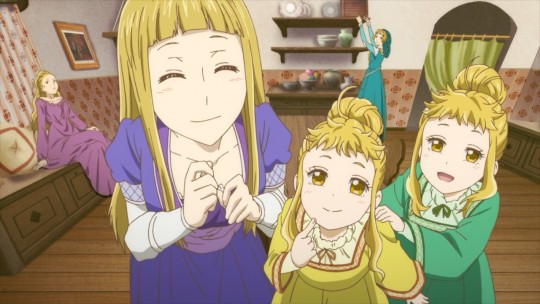
So yeah. I’m sure many people would call these nitpicks, and I wouldn’t necessarily disagree. I suppose if someone just wants a simple and cute story about “Female Empowerment HURRAH!” Arte is absolutely fine. As a story on its own it’s serviceable, and it does have its heart in the right place. I’m going to keep watching. But also, I’m someone who finds it a lot more interesting to examine issues in their own context so I get annoyed when an author deliberately sets a story within a certain frame, and then kind of blithely ignores some of the aspects of that frame - even though including them would make the story and the characters a LOT more relevant and interesting, at least as far as I’m concerned.
15 notes
·
View notes
Photo

Sister Plautilla Nelli (1524–1588) was a self-taught nun-artist and the first-known female Renaissance painter of Florence, Italy.
545 notes
·
View notes